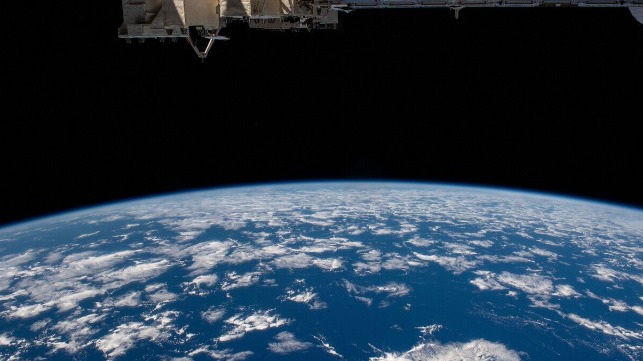A Whole New Orbit: Why Shipping Should Embrace the Connectivity Boom

The shipping industry has entered a new era of connectivity thanks to the rapid growth of satellite communications and the adoption of low earth orbit (LEO) technologies, like SpaceX’s Starlink. With over 5,400 satellites currently orbiting the Earth and maritime data download speeds now exceeding 200 Mbps, an increasing number of shipping companies are upgrading their fleets to take advantage of the benefits of LEO connectivity.
According to a survey of 73 shipowners conducted by UK research firm Thetius for HFW and CyberOwl, 43% of respondents plan to roll out LEO satellite communications over the next 12 months. There are reportedly already 7,000 ships that have LEO connectivity.
This is in line with a dramatic increase in data usage in shipping, which rose 207% and 146% in the container and bulk segments, respectively, between 2021 and 2022, according to an Inmarsat survey cited in the Thetius study The Network Effect. This demand was driven by business applications, such as voyage optimization and remote auditing, which accounted for a 131% increase in data usage across all vessel types for the period and also by crew data usage, which rose by 149%.
This wave of connectivity is set to impact the shipping industry in many ways, both positive and negative. However, here I focus on the exciting opportunity presented to operations leaders and shipowners – the chance to leverage AI and other advanced technologies to make their fleets smarter and enable them to make data-driven strategic decisions, much like leaders in other industries are doing today.
Paving the way for digital transformation
LEO satellite technology’s role in maritime communication goes beyond connectivity. It paves the way for further digitalization of the industry, enabling the integration of advanced AI technologies for data-driven decision-making in various maritime operational fields.
With increased connectivity, operations leaders can take a big step forward towards automation of ship navigation: AI and computer vision-powered systems can assist in navigating vessels, monitoring weather conditions and help the crew to make better decisions to ensure safe and efficient navigation. Visual data from computer vision sensors constantly monitoring the external marine environment both enhances navigational safety and allows companies to reduce fuel consumption and emissions by avoiding speed drops and unnecessary maneuvers. With AI and computer-vision based navigation tools, simple decisions will be able to be made autonomously without human intervention while more complicated ones – in high-risk situations during severe weather or in highly congested waterways – will be able to be made with the support of the office, which will have real-time visibility of what is happening on the vessel.
In the field of predictive maintenance, AI-based technologies will allow shoreside teams to analyze data from sensors on vessels, enabling shipping companies to better predict equipment failures and implement proactive maintenance schedules, thereby reducing downtime and optimizing maintenance costs. It is estimated that eliminating unplanned downtime through condition monitoring can increase margins by as much as 50%, according to the Thetius report The Optimal Route.
Connectivity can boost the bottom line
With improved connectivity, more companies will be able to use route optimization solutions and applications that analyse historical data, weather patterns and current conditions to suggest the most fuel-efficient routes and reduce emissions. Joint research conducted by NAPA-ClassNK and Marubeni, published earlier this year, found that voyage optimization can reduce emissions by 7.3% and extend CII compliance by up to three years.
In terms of cargo monitoring and management, operations teams in the office will be able to use digital applications to track cargo conditions to ensure proper handling and monitoring of perishable goods or hazardous materials, enhancing safety and compliance. Increased connectivity will also impact port operations: ports will become smarter with AI-based applications streamlining operations by managing traffic flow, optimizing container handling and automating logistics processes, thus reducing congestion and improving efficiency.
Connectivity – the fuel of smart shipping
The emergence of Starlink for maritime use and the exponential growth of LEO satellite communication services present exciting possibilities for those who choose to embrace it.
The ease of access to real-time weather data, route updates and navigation assistance will greatly benefit ship captains and crew members, while the shore side will enjoy a new level of visibility, enabling them to make informed decisions based on accurate data collected by multiple sensors. Moreover, with more operations leaders transitioning towards a more connected, digitalized maritime environment, the shipping industry will become safer, more sustainable and operationally efficient.
Yarden Gross is CEO and Co-founder of Orca AI.
The opinions expressed herein are the author's and not necessarily those of The Maritime Executive.

